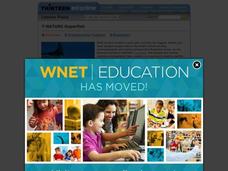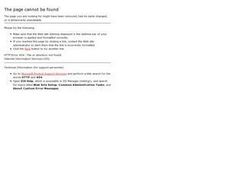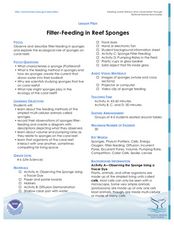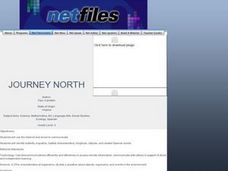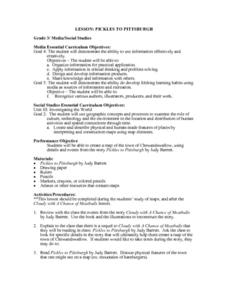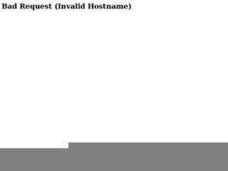Curated OER
Get in the Newspaper Habit
Dive into journalism with your high schoolers! The resources provided here will help your learners write unbiased, clear, and succinct newspaper articles. First they spend time sifting through stacks of articles, filling out a graphic...
Curated OER
Creating Animal Prints
Students investigate the habits of animals by studying their prints. In this animal life instructional activity, students investigate the different types of tracks left from animals by researching the Internet. Students...
Curated OER
Nature Superfish
Learners study the behavior or ocean animals called billfish. For this life science lesson, students create their own documentary about a local animal. They share their videos with the entire school.
John F. Kennedy Presidential Library & Museum
Red States/Blue States: Mapping the Presidential Election
Young historians investigate how voting patterns have changed by comparing the outcome of the 1960 election to the outcome of the recent election. A creative final assessment has participants making a news show wherein they provide...
Curated OER
Drawing Upon Our Five Senses
Fifth graders identify the parts and functions of the body's five senses. In this biology lesson, 5th graders create a replica of the nervous system highlighting its parts. They create a scrapbook containing information on the senses...
Curated OER
Invent an Insect
Explore biology by researching adaptation. First, learners research and define a list of insect vocabulary terms and discuss the benefits of each insect characteristic. They then utilize a worksheet to create their own insect and share...
Curated OER
The Nesting Habits of Folders
Students create an organized web of nested grade level folers. Within each grade level folder, they create a Language Arts/Social Studies folder and a Math/Science folder. All folders be color coded.
Curated OER
Filter Feeding in Reef Sponges
Learners investigate the role of sponges in our oceans. In this biology lesson, students create a diagram visualizing how sponges bring food into their bodies through a filtering process. Learners discuss the connections...
Curated OER
Journey North
Third graders study butterflies and their migration habits. They track butterfly migration and communicate via e-mail with students in Mexico where the butterflies migrate. They write letters to the students in Mexico, as well.
Curated OER
Dinosaurs 1: Where Are the Dinosaurs?
Young scholars explore dinosaurs. In this dinosaur identification instructional activity, students watch video clips for different dinosaurs from the Discovery Kids website. Young scholars discuss the clips with their teacher. Students...
Curated OER
Magnetic Bookmarks
Learners design magnetic bookmarks with healthy living messages. They decide on the shape, length, color, and type of material to use for creating their bookmark. Students write in an "inventor's journal" about their design and...
Curated OER
Pickles to Pittsburgh
Third graders explore the geography in the book "Pickles to Pittsburgh" by Judy Barrett. They read the story and identify the physical features of the town, discuss the elements included on a map, and create a map of the town of...
Curated OER
Explore the Food Web
Students identify plants and animals in the journals of Lewis and Clark's expedition. They describe the various animal habits. Students interpret the behaviors of the animals discovered on the expedition. They design a food web using...
Curated OER
"Tomorrow and Tomorrow and Tomorrow"
Do you want to live forever? After reading Kurt Vonnegut’s short story, “Tomorrow and Tomorrow and Tomorrow,” class groups adopt the roles of an ethics committee, product manufacturers, concerned scientists, and potential users of an...
Curated OER
Health and Hygiene
Students examine hygiene and health practices today. In this health science lesson, students research medieval treatments to ailments common today. They evaluate how effective herbal remedies are in treating diseases.
Curated OER
Fable Writing--Inter-disciplinary Approach To Social Sciences
Students recognize the elements of a fable and write an original fable. They make connections with morals and other law-related concepts.


